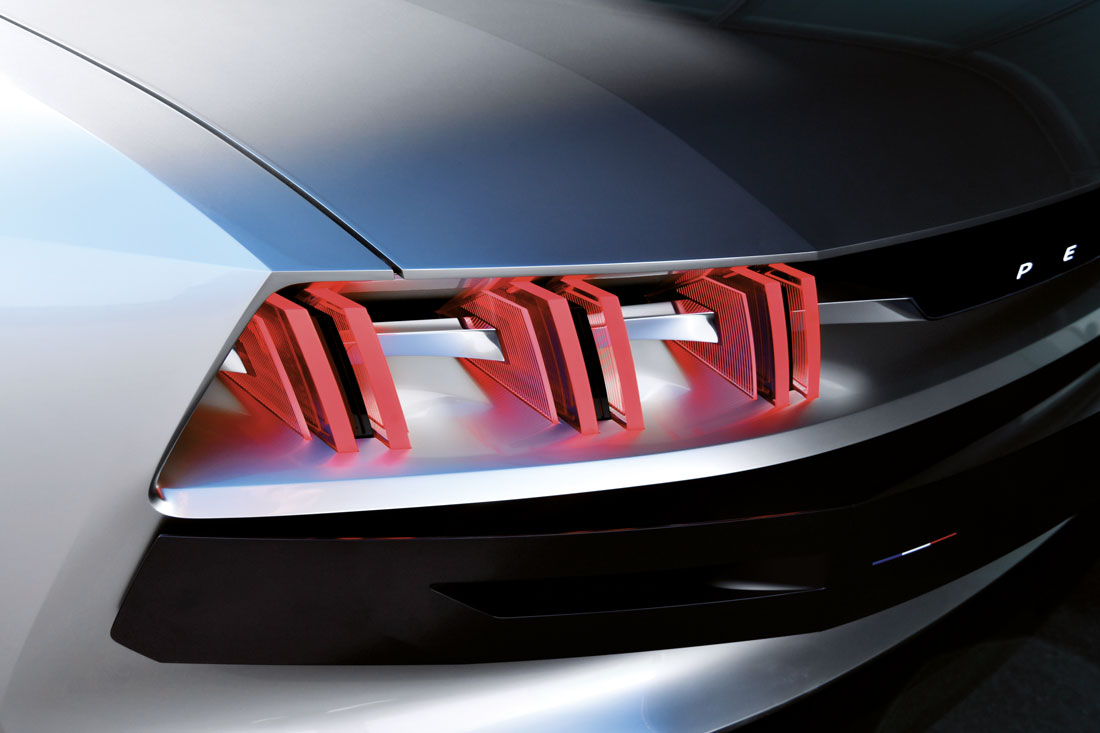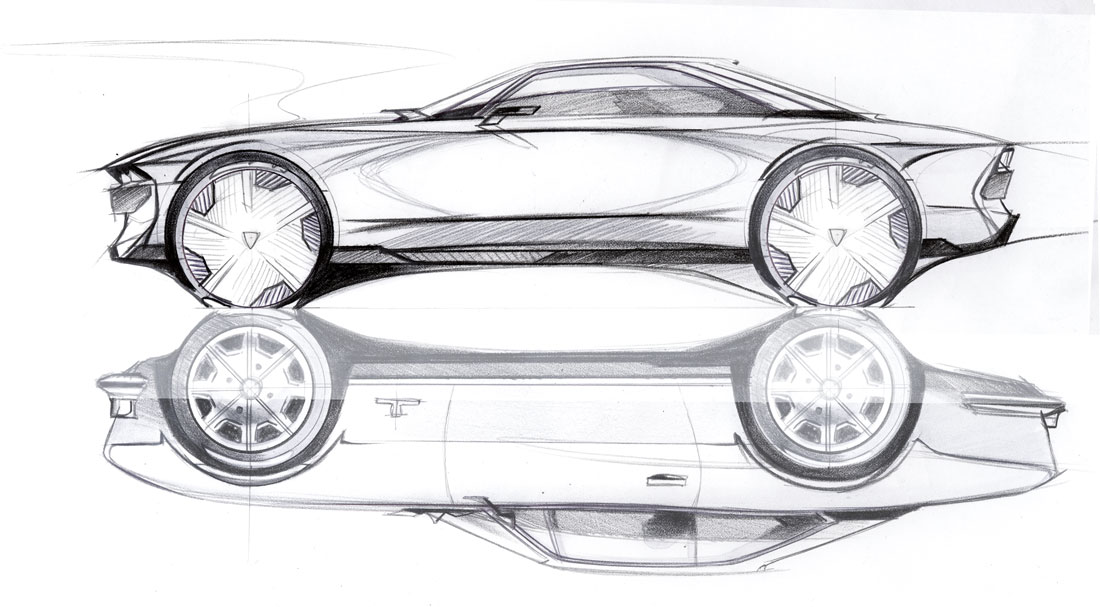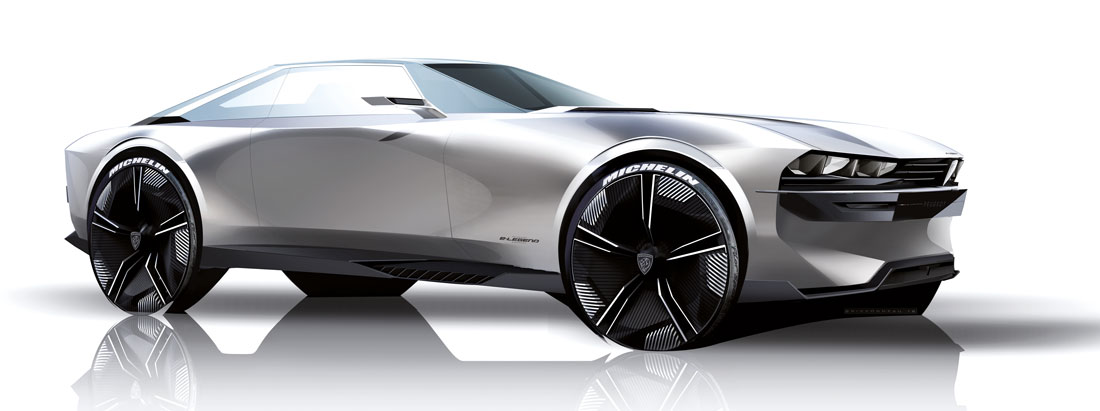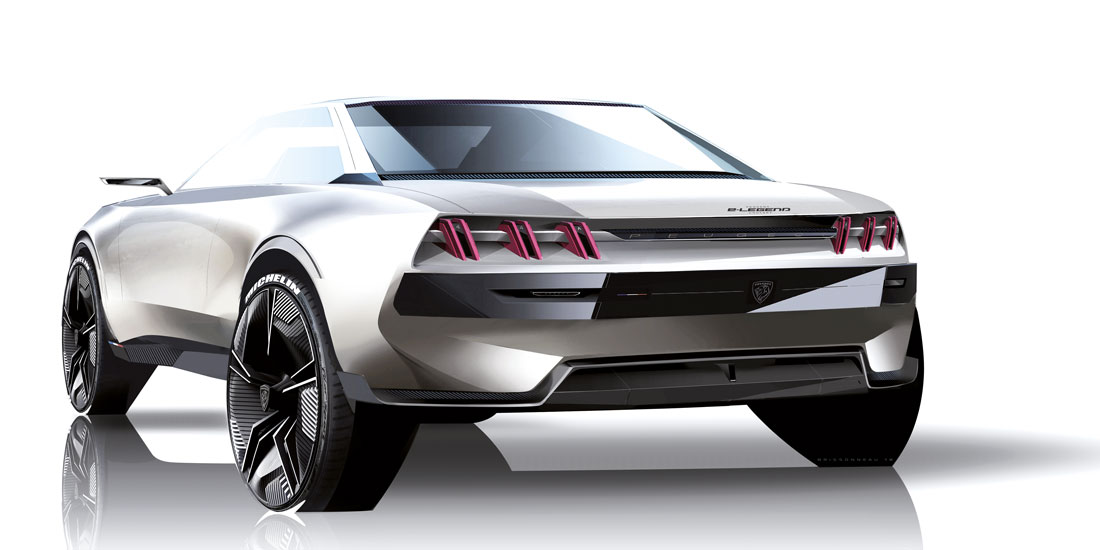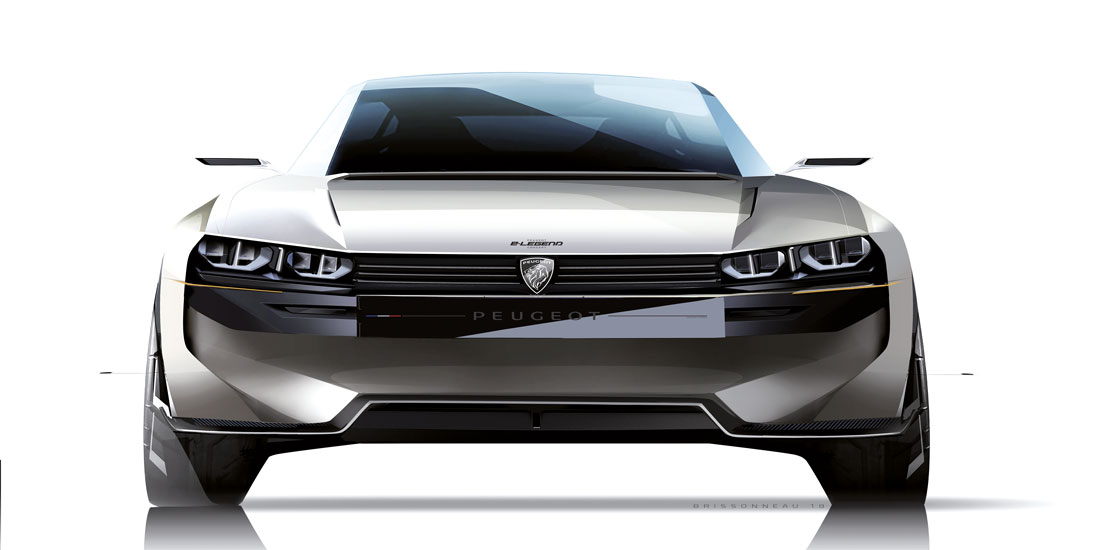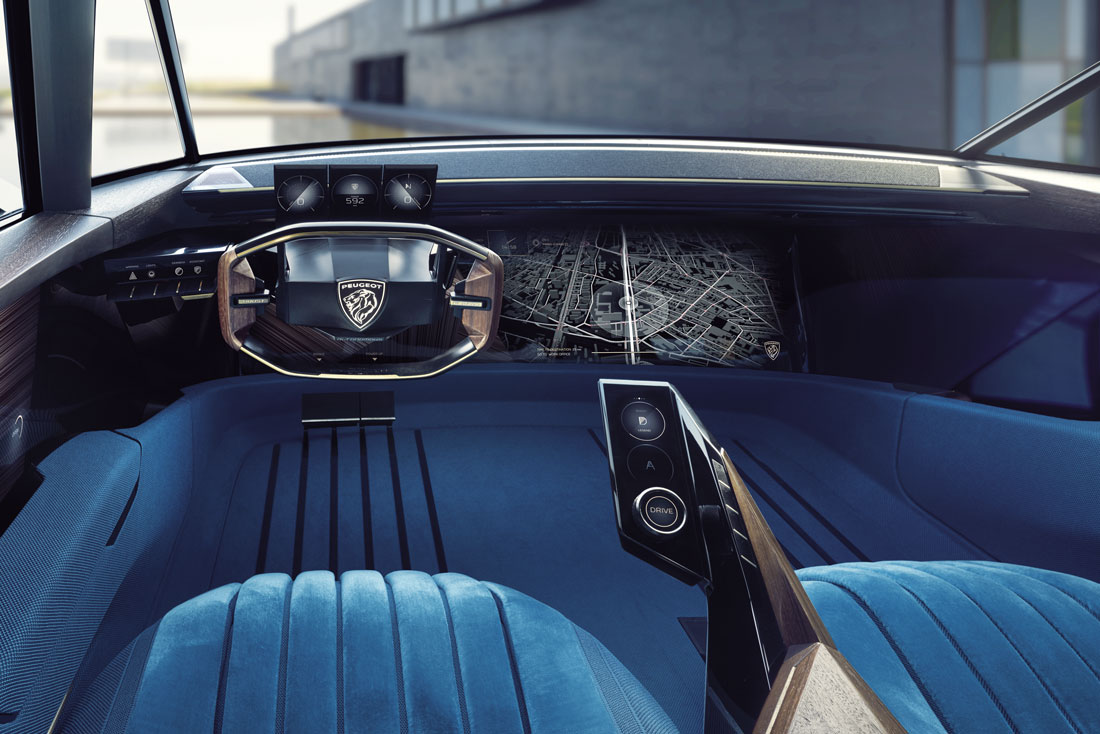When is a neo-retro design not retro? When the styling serves as a gateway to future technologies, a philosophy that Peugeot designers followed when they created the E-Legend concept. Unveiled to the public at the Paris motor show in October, recalls Pininfarina’s 504 Coupe from 1969, but it is not a homage. Rather, the E-Legend is meant to signify that motoring excitement and passion can co-exist with autonomous and electric mobility. “We didn’t mean to do a remake of the 504 Coupe,” said Gilles Vidal, design director at Peugeot. “We wanted to make the point that the future can be exciting.”
“There are some aspects and details that connect it to the 504 Coupe – but it’s not neo-retro,” Vidal said. “There’s nothing vintage anywhere.” The E-Legend’s exterior styling is by Nicolas Brissoneau. Points of reference to the 504 include a sloping hood, badging on the nose and tail, sharp edged fender lines, a velour interior with H-shaped seats, an expansive greenhouse and black trim at the base of the C-pillar. But instead of a static piece of molded plastic, the trim piece incorporates a small screen that greets the driver by name and indicates that the E-Legend is charged and warns pedestrians that the car is in autonomous mode.
The E-Legend has a classic long hood/short trunk shape that is easily recognizable as signifying a grand touring car, Vidal said. “It’s imprinted into everybody’s mind,” he said. The creased fenders and sharp angles relate to recent best-selling Peugeots including the 3008 and 5008 SUVs, as do the “lion’s claw” tail lamps. “It’s pushing our form language into the future,” he said.
As designed, the E-Legend is equipped with 100 kWh batteries and an electric motor with 340 kW – which would propel the car to 100 km/h in less than four seconds, with a maximum speed of 220 km/h. Theoretical range is 600 km, with 500 km available in a 25-minute recharge.
Christophe Pialat’s interior updates organic materials such as velour, wood and metal in a high-tech way. Turquoise-hued seating surfaces combine silk velour with synthetic mesh for strength; sustainably harvested paldao wood door trim — meant to suggest 1960s ebony or rosewood, is combined with virtual “grain” projected on screens throughout the car.
On the question of screens — an issue for autonomous cars — Peugeot has settled on one large 49-inch infotainment screen that spans the front footwell. “We don’t want to impose too much content on the user,” he said, noting that passengers will bring their own devices with them, and that technology and operating systems will change constantly.
(Full article in A&D no. 233)

